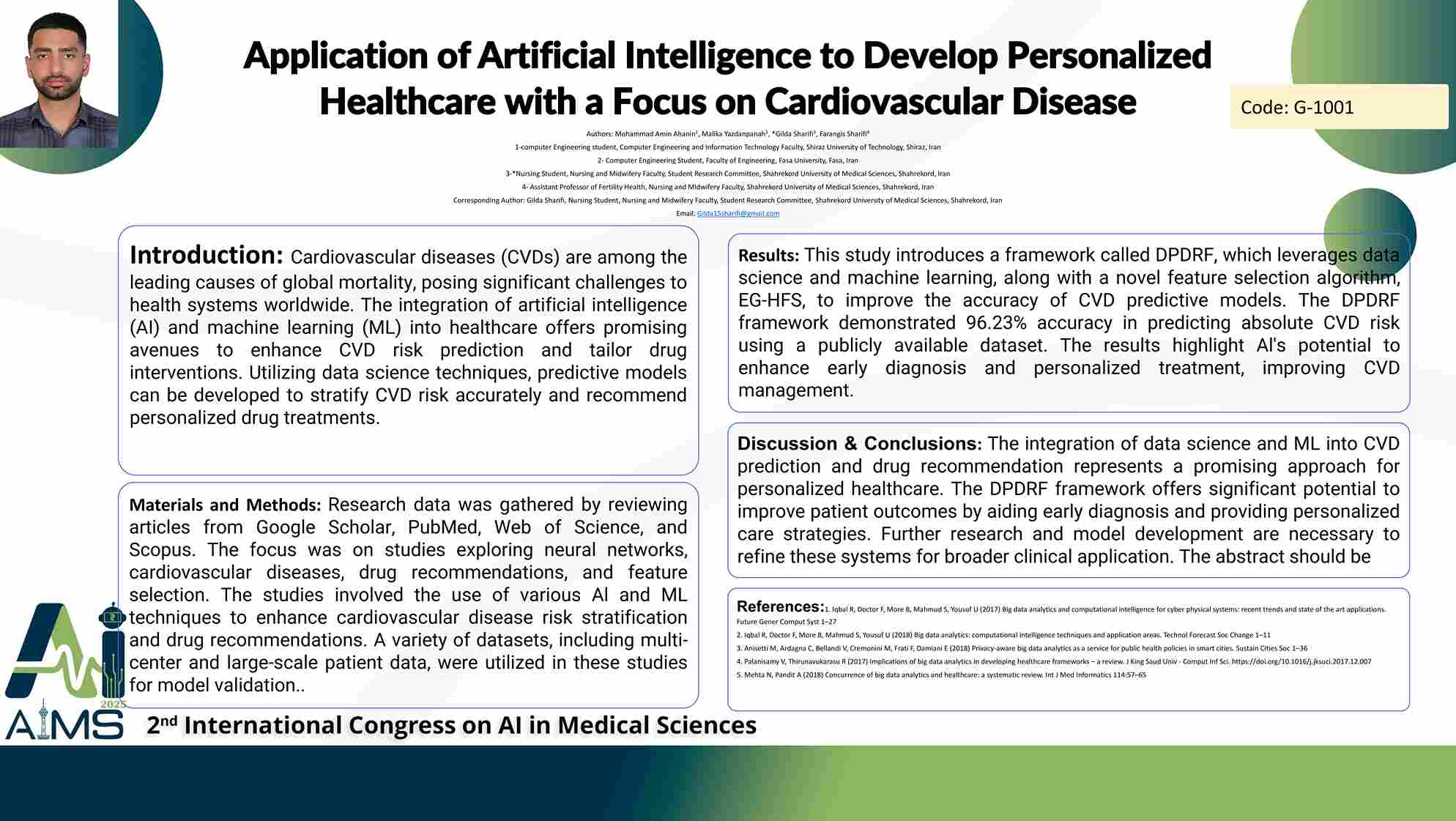استفاده از هوش مصنوعی برای توسعه مراقبت های بهداشتی شخصی با تمرکز بر بیماری های قلبی عروقی
کد: G-1003
نویسندگان: Mohammad Amin Ahanin ℗, ملیکا یزدان پناه, گیلدا شریفی *, فرنگیس شریفی
زمان بندی: زمان بندی نشده!
برچسب: دستیار مجازی هوشمند
دانلود: دانلود پوستر
خلاصه مقاله:
خلاصه مقاله
Background and Aims: Cardiovascular diseases (CVDs) are a leading cause of mortality worldwide, presenting significant challenges for healthcare systems. Personalized healthcare aims to tailor medical treatments to individual patients based on genetic, lifestyle, and environmental factors. However, its widespread adoption has been hindered by data complexity and the need for advanced computational models. This study aims to explore the application of machine learning (ML) in the development of predictive models for stratifying CVD risk and providing personalized drug recommendations. Method: Research data was gathered by reviewing articles from Google Scholar, PubMed, Web of Science, and Scopus. The focus was on studies exploring neural networks, cardiovascular diseases, drug recommendations, and feature selection. The studies involved the use of various AI and ML techniques to enhance cardiovascular disease risk stratification and drug recommendations. A variety of datasets, including multi-center and large-scale patient data, were utilized in these studies for model validation. Results: This study introduces a framework called DPDRF, which leverages data science and machine learning, along with a novel feature selection algorithm, EG-HFS, to improve the accuracy of CVD predictive models. The DPDRF framework demonstrated 96.23% accuracy in predicting absolute CVD risk using a publicly available dataset. The results highlight AI’s potential to enhance early diagnosis and personalized treatment, improving CVD management. Conclusion: The integration of data science and ML into CVD prediction and drug recommendation represents a promising approach for personalized healthcare. The DPDRF framework offers significant potential to improve patient outcomes by aiding early diagnosis and providing personalized care strategies. Further research and model development are necessary to refine these systems for broader clinical application.
کلمات کلیدی
Artificial Intelligence, Cardiovascular Disease, Machine
